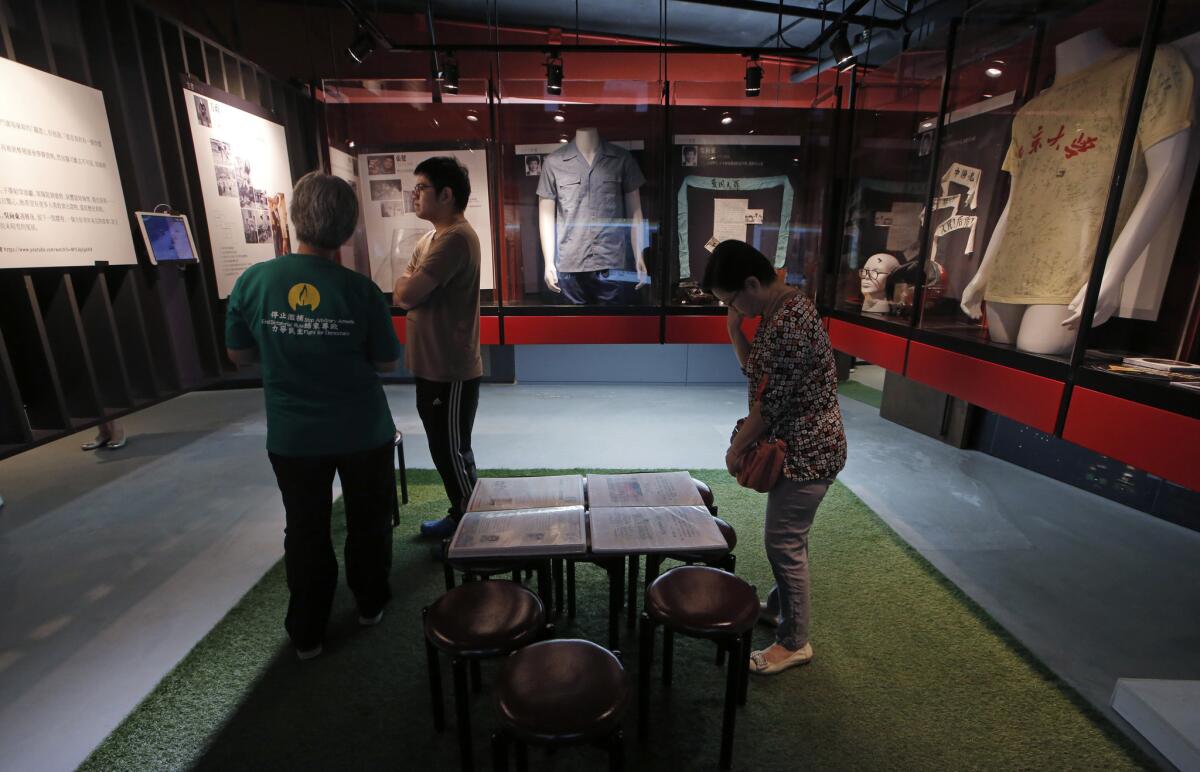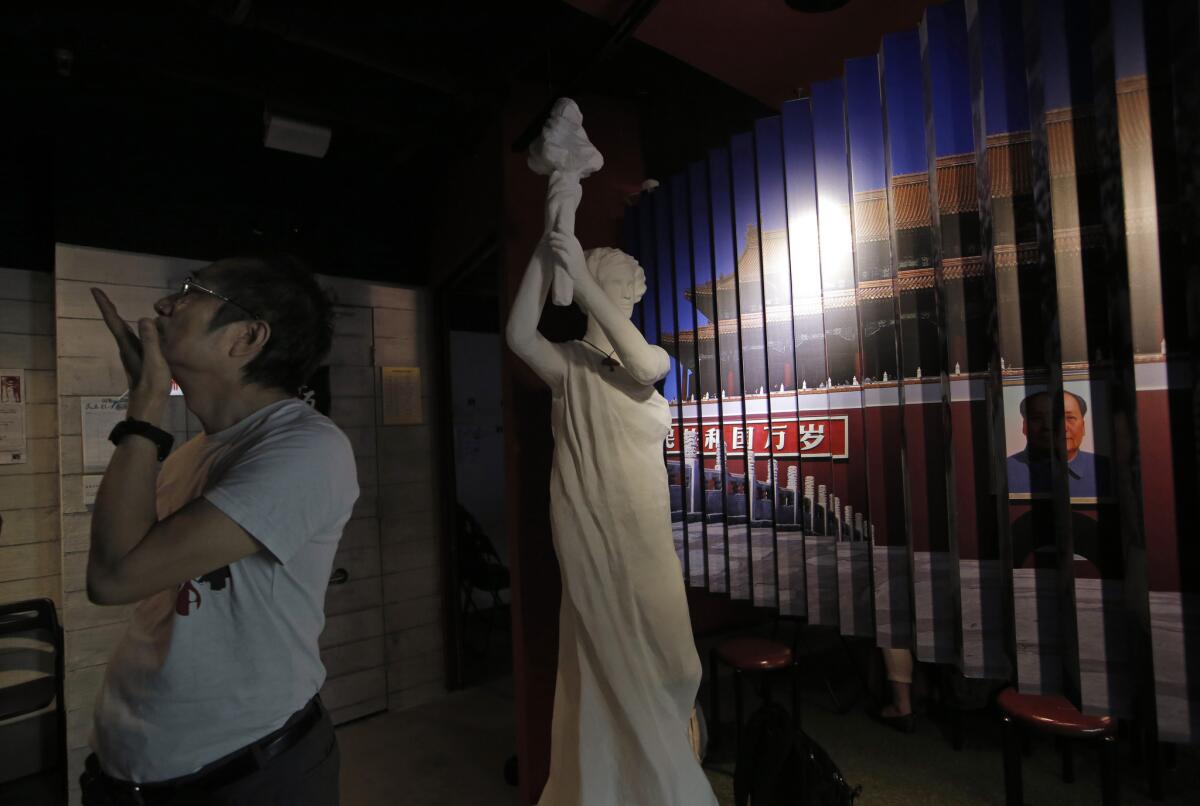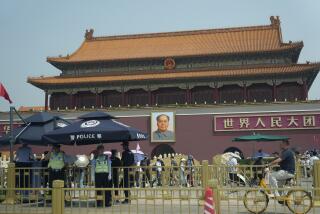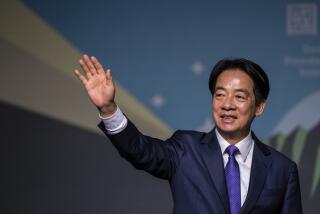A tiny museum in Hong Kong fights to reclaim the memory of the Tiananmen Square uprising

Reporting from Hong Kong — Tucked between dive bars and boutique hotels in a popular shopping district is a shoebox museum that encapsulates more than a quarter-century of defiance in this semi-autonomous Chinese territory.
There are no signs outside. And only the most determined visitors venture here in order to gaze at the open wounds of history.
The cracked metal helmet of a teenager who promised his parents he’d come home soon after checking on his classmates who were protesting against the government. The bullet that once was lodged in the hip of a demonstrator who is now living in the United States under political asylum. A handwritten death note by a college student before he prepared to face off against rifle fire and rolling tanks.
By presenting evidence of the crackdown of the 1989 pro-democracy uprising in Tiananmen Square in Beijing, the June 4th Museum counteracts the enforced oblivion in mainland China, where authorities have all but blotted out the bloody episode.

Many mainland Chinese born in the past 30 years know little to nothing about what happened on June 4, 1989. On every anniversary, families of the hundreds killed by Chinese soldiers are placed under surveillance. Even private commemorative gestures are punishable crimes.
But in Hong Kong, which is afforded the freedoms of speech and assembly, the Tiananmen Square massacre is commemorated by the museum, and by tens of thousands of people who assemble in an annual candlelight vigil in the territory’s central park. The perennial memorial is organized by the Hong Kong Alliance in Support of Patriotic Democratic Movements in China, a coalition formed to aid the protesters. Two years ago, the alliance established the permanent museum on a mortgage and donated funds.
We no longer aspire to build a democratic China.
— Althea Suen, student union president of the University of Hong Kong
“Its most important mission is to preserve the memories and the facts of Tiananmen,” said Richard Tsoi, the alliance’s vice chairman, who helps oversee the museum.
For mainland visitors like Eric Li, 32, the museum was critical to his fact-finding weekend jaunt from Beijing.
“I just want to learn the truth. When more people learn the truth, then perhaps we can change the country,” Li said. “But it’s difficult.”
Remembering the Tiananmen Square uprising > > >>
The museum is facing a difficult future.
A dispute with the building’s owner appears likely to force the museum to close by the end of the year. Its backers hope to raise money to build a new home, but it may face a more existential threat than the loss of its current space.
On this anniversary, more Hong Kong residents, especially the post-Tiananmen generation of young activists who increasingly are charting the territory’s own pro-democracy movement, have come to see fighting for democracy in mainland China — the alliance’s avowed goal — as a lost cause, or at least a rallying cry that rings hollower than ever. And they, who pride themselves as Hong Kongers more than as Chinese nationals, particularly chafe at the alliance’s twinning of Chinese patriotism and pursuit of a democratic future.
“We no longer aspire to build a democratic China,” said Althea Suen, student union president of the University of Hong Kong. “Instead of chasing a pipe dream, we’ll be better served shouldering the responsibilities relevant to our generation.”
So for the first time, all the student leaders sat out the vigil on Saturday but marked the anniversary in their own way — by holding forums on how best to strive for democracy in Hong Kong. About 3,000 people attended, shunning the rituals at the park, where organizers estimated as many as 125,000 people joined the vigil.
“What binds all of us as Hong Kongers is our longing for freedom,” said Edward Leung, a leader of an influential localist group who was attending a campus forum. Leung said his family had fled the mainland after the Tiananmen massacre.
Replicas of the Goddess of Democracy — the plaster statue that, in 1989, faced off Mao Zedong’s portrait on the square — continue to greet visitors at the museum and at local college campuses. But if students turn away from democracy on the mainland, it could render the museum politically petrified and doom its current fundraising campaign to stay open.
For many young people in Hong Kong, the failure of the student-led Umbrella Movement to pressure Beijing for the right to vote in a free and fair election has fueled growing alienation from China.
While they’ve begun to reject Tiananmen as their fight, they have been emboldened by how history has not repeated itself: There was no bloody crackdown of the Umbrella Movement.
However, the transitional framework that grants them the freedoms to carry on the fight is set to expire by 2047, when Hong Kong is scheduled to fully integrate with mainland China.
Tsoi, who joined the alliance as a college student leader at the time of Tiananmen, said it may be possible to broaden the museum’s mission to include more pressing social movements, but he said for now, “This is a tool of resistance.”
“Museums are a barometer of the openness of a society,” said Denise Ho, a Yale University historian on modern China who taught in Hong Kong two years ago and published a critique on the museum. “Even if this is a pet project by a political organization doing what the government cannot or will not, it still creates an opposing voice, and it’s useful.”
A stone’s throw from the June 4th Museum is the official Hong Kong Museum of History, which carries no mention of the crackdown.
Ryan Kilpatrick, 23, a Hong Kong University student, came for the June 4th Museum’s opening and recently returned when he got word of its possible shuttering.
“It’s regrettable that young people no longer hope for a democratic China,” Kilpatrick said. “To be here again is to remember how powerful that idea was.”
ALSO
Learning Mandarin is really, really hard — even for many Chinese people
Terrorist attacks show biggest decline in a decade; but let’s wait before celebrating
Flooding in France kills more than a dozen people and forces closures of roads, subways and museums
Law is a special correspondent.
UPDATES:
1:12 p.m.: This article was updated with a quote from the day’s commemorations.
This article was originally published at 2 a.m.
More to Read
Sign up for Essential California
The most important California stories and recommendations in your inbox every morning.
You may occasionally receive promotional content from the Los Angeles Times.










